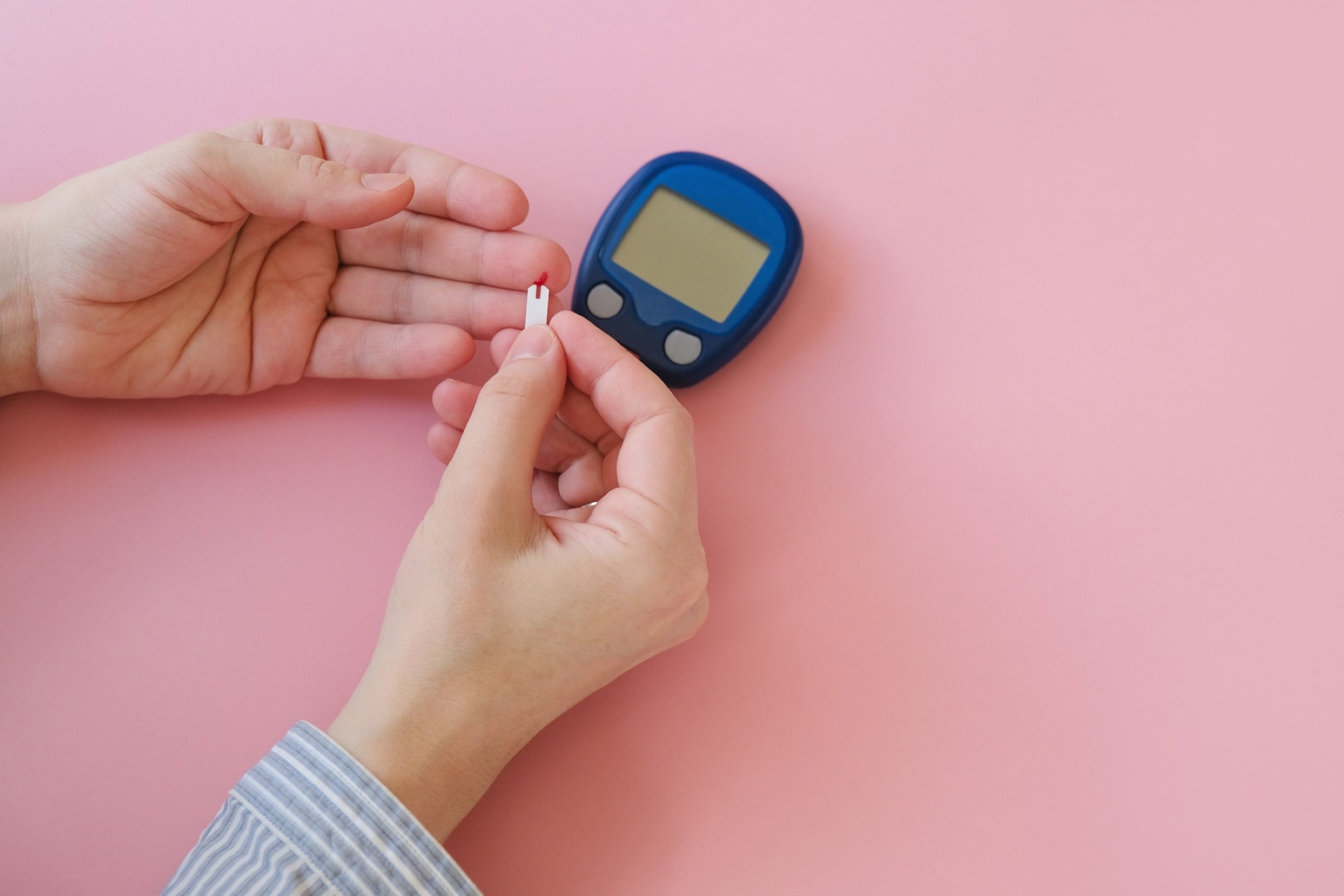A new real-world study reveals that advanced GLP-1 therapies, including semaglutide and tirzepatide, provide comparable glycemic control while offering superior weight benefits compared to metformin in adolescents newly diagnosed with type 2 diabetes.
Exploratory real-world experience with GLP-1 receptor agonists vs. metformin in youth with new-onset type 2 diabetes: a single-center retrospective study. Image Credit: Meteoritka / Shutterstock
In a recent study published in the Journal of Pediatric Endocrinology and Metabolism, researchers compared the efficacy of metformin and GLP-1–based therapies, including GLP-1 receptor agonists and the dual GIP/GLP-1 agonist tirzepatide, in youth newly diagnosed with type 2 diabetes (T2D).
Aggressive Nature and Treatment Challenges of Youth-Onset T2D
Youth-onset T2D progresses rapidly, with early onset of complications in adulthood. Metformin remains the first-line therapy for newly diagnosed pediatric patients; however, while it effectively lowers glycated hemoglobin (HbA1c), it has minimal effects on weight loss and limited durability in glycemic control. GLP-1–based therapies, already recommended in adults, are gaining traction in younger populations due to their glucose-lowering and weight-reducing effects.
Rationale for Exploring High-Potency GLP-1 Therapies
Several GLP-1 receptor agonists are approved for pediatric T2D, supported by guidelines as adjunctive treatments to metformin. Yet, approved pediatric doses yield modest weight benefits. This has prompted investigation into higher-potency GLP-1RAs and monotherapy approaches, including dual incretin agents such as tirzepatide, to assess whether stronger metabolic effects can be achieved in this age group.
Study Design and Population Characteristics
This retrospective, real-world study extracted data from electronic medical records of an urban pediatric hospital. Eligible participants were youth with newly diagnosed T2D who received GLP-1RA or metformin monotherapy between January 2022 and March 2024. Exclusion criteria included combination therapy, insulin as first-line treatment, and diabetes secondary to other causes.
Collected variables included demographics, diabetes duration, BMI, HbA1c, BMI z-scores, medication type and dose, and adverse effects. All participants were publicly insured. The primary outcomes were monthly changes in HbA1c and percent BMI within the first year post-diagnosis, with secondary outcomes assessing median changes in HbA1c, BMI, and z-scores.
Baseline Demographics and Medication Profiles
A total of 125 youth were included (median age 14.83 years), with 113 on metformin and 12 on GLP-1RA therapy. The GLP-1RA group was predominantly female (83%) compared to 51% in the metformin group, and fewer individuals identified as Latino (41.7% vs 69.9%). The most prescribed GLP-1RA was semaglutide 1 mg (33%), followed by tirzepatide 7.5 mg (25%). Higher-potency formulations (semaglutide up to 2.4 mg and tirzepatide) were used, which may account for stronger weight effects compared to pediatric trials that employed lower doses. Seven GLP-1RA recipients reported gastrointestinal adverse effects such as nausea, vomiting, and constipation.
Comparative Glycemic and Anthropometric Outcomes
Baseline HbA1c levels were similar across groups. At follow-up, unadjusted analyses showed lower HbA1c in the GLP-1RA group (36 vs 44 mmol/mol, p = 0.03), but adjusted models revealed no statistically significant monthly HbA1c change (β −1.1, p = 0.308). Median HbA1c decreased by 8.7 mmol/mol with metformin and 14.2 mmol/mol with GLP-1RA therapy.
Regarding weight outcomes, GLP-1RA recipients exhibited greater BMI reduction (−0.43 kg/m² per month) compared with metformin (−0.01 kg/m² per month). Adjusted regression analysis indicated an approximately 1% additional monthly BMI reduction with GLP-1 therapy (β = −1.08%, p = 0.001). Final percent BMI reduction was −5.1% for GLP-1RA and −0.59% for metformin, with corresponding z-score decreases of −0.02 and −0.01, respectively.
Interpretation of Efficacy and Safety Findings
At study completion, 83% of GLP-1RA users and 67% of metformin users achieved the target HbA1c of 48 mmol/mol. Although glycemic control was comparable, GLP-1RA therapy conferred superior weight reduction benefits. Adverse events were limited to gastrointestinal symptoms, consistent with the known pharmacological effects of GLP-1. The small sample size of the GLP-1RA, however, limits generalizability, and baseline BMI differences may have influenced the observed outcomes.
Study Limitations and Future Research Directions
The interpretation of the findings is limited by the small GLP-1RA cohort (n = 12), baseline imbalances in BMI and sex, the single-center retrospective design, incomplete autoantibody testing, and a median follow-up of approximately eight months. Larger, multicenter trials with balanced cohorts and extended follow-up are required to confirm comparative effects on HbA1c sustainability, beta-cell preservation, and insulin sensitivity.
Journal reference:
- Tejeji I., Zeier T., Smith J. A., Chang N. T., Chao L. C. (2025). Exploratory real-world experience with GLP-1 receptor agonists vs. metformin in youth with new-onset type 2 diabetes: a single-center retrospective study. Journal of Pediatric Endocrinology and Metabolism. DOI: 10.1515/jpem-2025-0493, https://www.degruyterbrill.com/document/doi/10.1515/jpem-2025-0493/html
